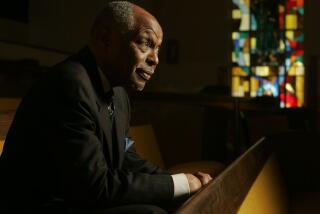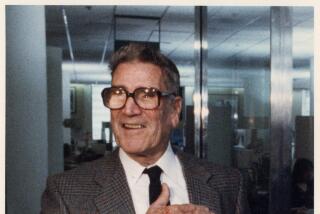A disaster at dealing with catastrophe
As the Utah mine saga moves from catastrophe to, inevitably, a place beyond our collective front-page consciousness, the national media will leave Crandall Canyon families to mourn their losses. Reflecting on the news coverage of the tragedy, we are left to ponder the strange legacy of the chief executive of the mining company, Robert E. Murray, and his bizarre style of crisis communications.
The 67-year-old Murray was in Montana when he got word of the collapse at the mine owned by Murray Energy Corp. He hopped on a private jet and was at the scene within hours, taking command of the rescue operation, providing the media updates. All this was textbook PR in the best sense. The presence of the concerned chief executive on the scene of a disaster has been understood to be essential to successful crisis management since Exxon’s CEO infamously took far too long to travel to Valdez, Alaska, in 1989, to take stock of the oil spill that caused one of history’s worst environmental disasters.
But after that, Murray broke so many rules of crisis communications he had news anchors, on-air, asking what they’d just witnessed. From his first briefings, Murray angrily denounced the media (seldom a winning strategy) and blamed union organizers for suggesting that the dangerous practice of “retreat mining” had led to the collapse. He blasted environmentalists for their crusade against global warming, calling it an affront to the coal industry and to the American economy.
Crisis communications experts universally panned Murray’s rantings as “callous,” “damaging” and “not helpful” to the families of the trapped miners.
Murray also insisted that an earthquake had caused the mine collapse, then doggedly held to that theory despite seismologists’ conclusions that the tremors were caused by the collapse. In a crisis, there is always a temptation to provide answers before all the evidence is in and to hold on to beliefs even as contradicting facts mount. This truism was underscored last year at the Sago Mine explosion, when the public was mistakenly told that buried miners were found alive when, in fact, all but one had been killed.
In Utah, each passing day dimmed any reasonable hope that the six miners were still alive. After three rescuers were killed in a cave-in, Murray dropped out of sight, leaving a subordinate to conduct briefings. A representative for the miners’ families said, “We feel Bob Murray has abandoned us.” Without any explanation for his disappearance, one could only assume that he was made to understand that his abrasive style did not fit the increasingly grim mood.
Murray’s failings will be an object lesson for corporate executives for years to come. Companies and their executives need to be prepared for a crisis. That does not mean one considers it acceptable or inevitable; indeed, an audit of vulnerabilities may uncover deficiencies that can be fixed. But responsible executives understand that things can and do go wrong.
Properly done, crisis communications is not spin or damage control. It is the calm and honest disposition of information at a time when information is incomplete and may be changing by the minute. The news media will demand immediate answers. Critics will criticize. And CEOs need training to resist the urge to argue or speculate in times of great stress. The sole focus should be the safety and welfare of any victims.
It doesn’t have to be pretty. It is a measure of public cynicism toward slick spokespeople that Murray’s unpolished, bellicose presence struck many as refreshingly candid.
“Despite [Murray’s] occasional moments of near-insanity, I suspect he’s better liked by the general public than he would be if he’d gone by the crisis communication book,” David Murray (no relation) wrote on his public relations blog, Shades of Gray.
In times of crisis, spokespeople should trust in the redeeming power of being authentic. We empathize with the leader who bravely steps up in a time of peril. We readily forgive an unpolished and even shaky presentation -- as long as we feel in our hearts that the spokesperson is being truthful to us, a feeling Bob Murray has not always inspired.
More to Read
Sign up for Essential California
The most important California stories and recommendations in your inbox every morning.
You may occasionally receive promotional content from the Los Angeles Times.










